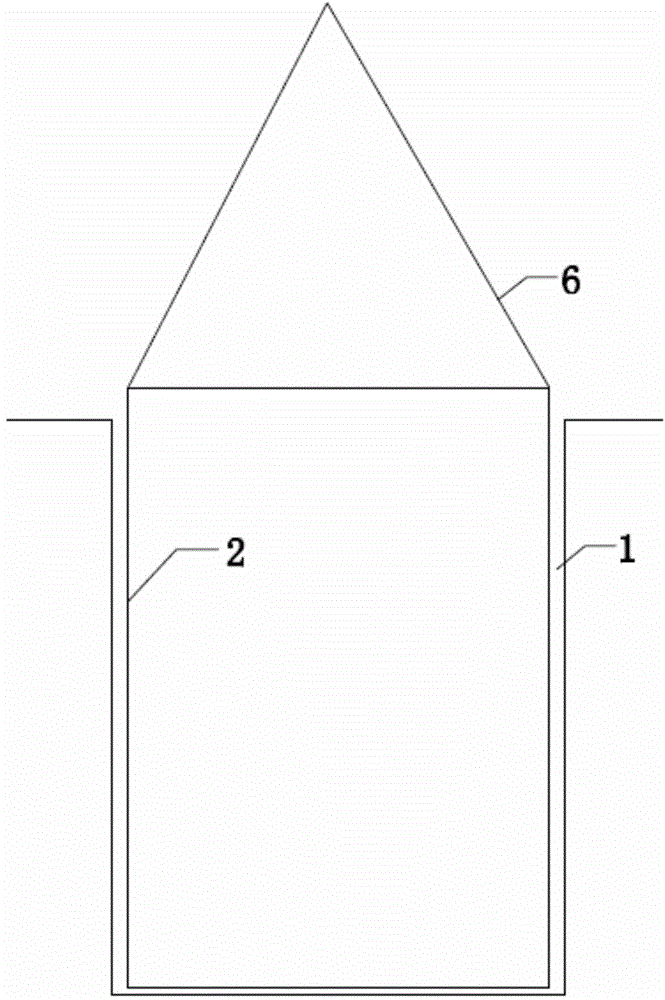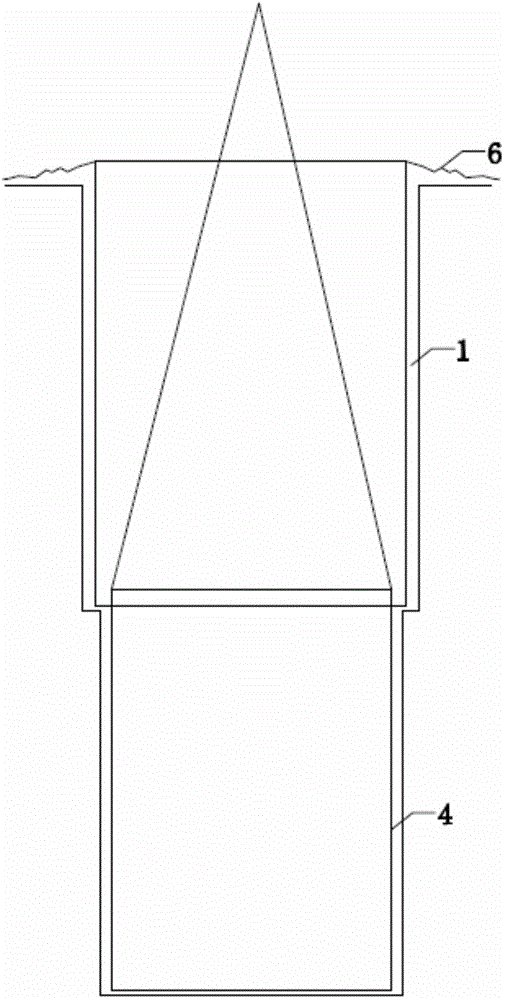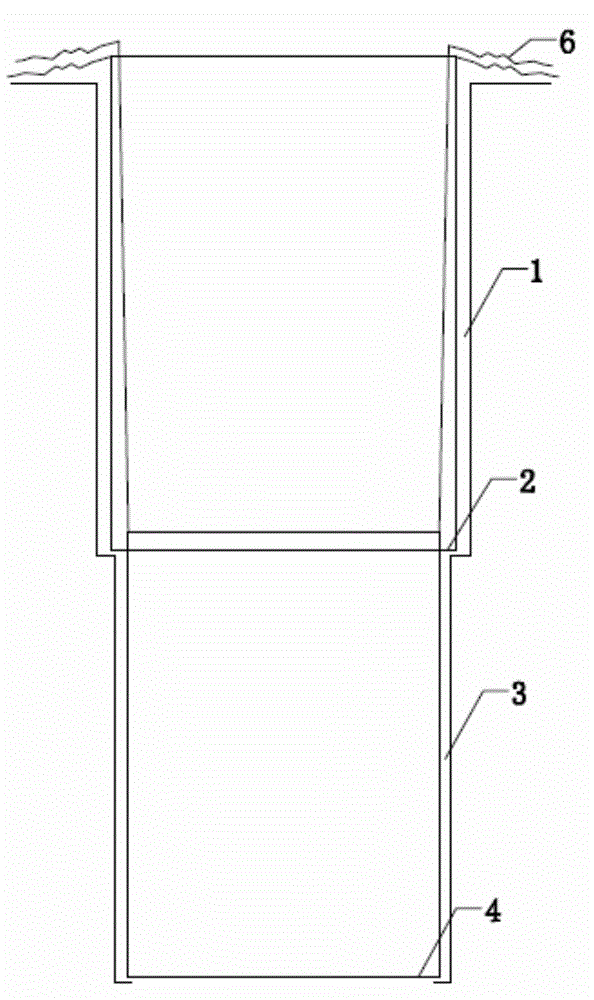Construction method of pore-forming pouring pile in dry work of super-large-diameter full-steel pipe casing
A technology with super large diameter and construction method, which is applied in sheet pile walls, foundation structure engineering, construction, etc., can solve the problems of large disturbance of bearing layer, long construction period, and high labor intensity, so as to prevent hole collapse and high construction efficiency , the effect of low labor intensity
- Summary
- Abstract
- Description
- Claims
- Application Information
AI Technical Summary
Problems solved by technology
Method used
Image
Examples
Embodiment Construction
[0031] A method for constructing super-large-diameter all-steel casing dry-worked hole-forming cast-in-place piles, comprising the following steps:
[0032] Step a, measuring and placing the pile position; after measuring and placing the pile position in the present embodiment, the drilling rig is put in place, the drilling rig of the present embodiment is a rotary drilling rig, and a telescopic automatic leveling device is arranged on the chassis of the rotary drilling rig, There are instruments in the operating room to accurately display the electronic readings. When the drill bit is aligned with the cross line at the center of the pile position, all data can be locked without further adjustment. within 2cm.
[0033] In this embodiment, the torque is generated by the fully hydraulic power head of the rotary drilling rig, and the drilling pressure is provided by the hydraulic cylinder installed on the drill frame. These two parts are transmitted to the drill bit through the t...
PUM
| Property | Measurement | Unit |
|---|---|---|
| Viscosity | aaaaa | aaaaa |
Abstract
Description
Claims
Application Information
 Login to View More
Login to View More - R&D
- Intellectual Property
- Life Sciences
- Materials
- Tech Scout
- Unparalleled Data Quality
- Higher Quality Content
- 60% Fewer Hallucinations
Browse by: Latest US Patents, China's latest patents, Technical Efficacy Thesaurus, Application Domain, Technology Topic, Popular Technical Reports.
© 2025 PatSnap. All rights reserved.Legal|Privacy policy|Modern Slavery Act Transparency Statement|Sitemap|About US| Contact US: help@patsnap.com



